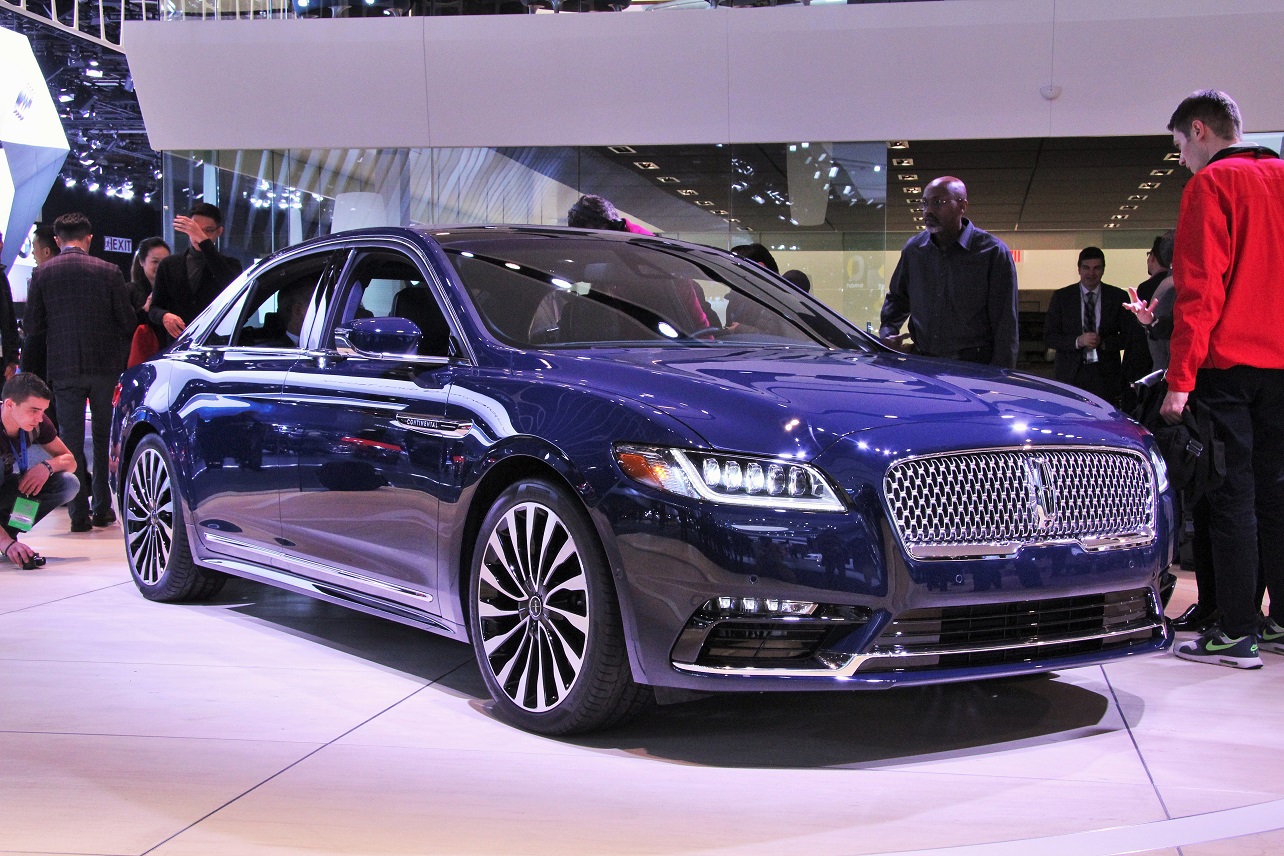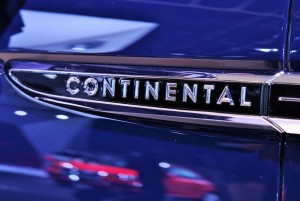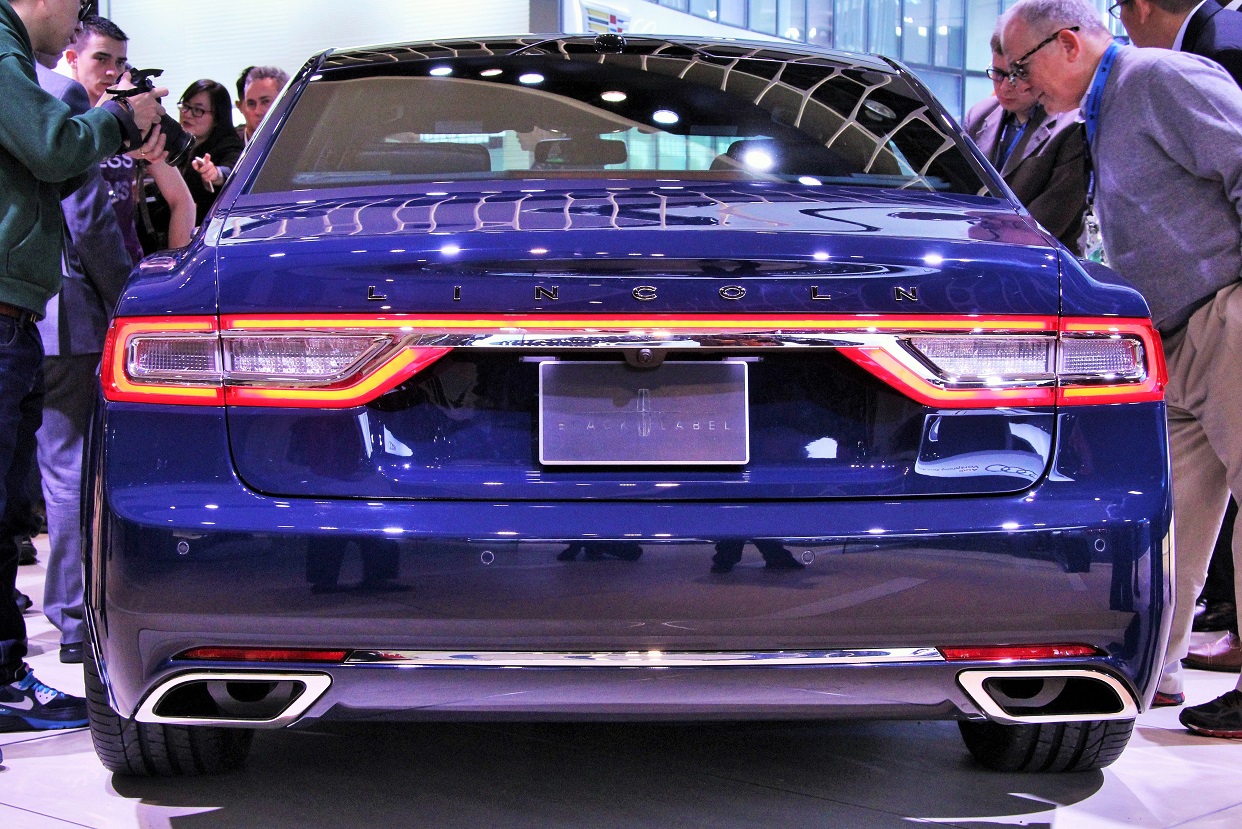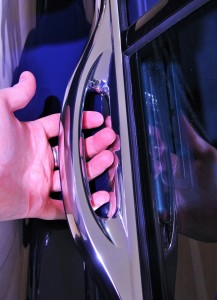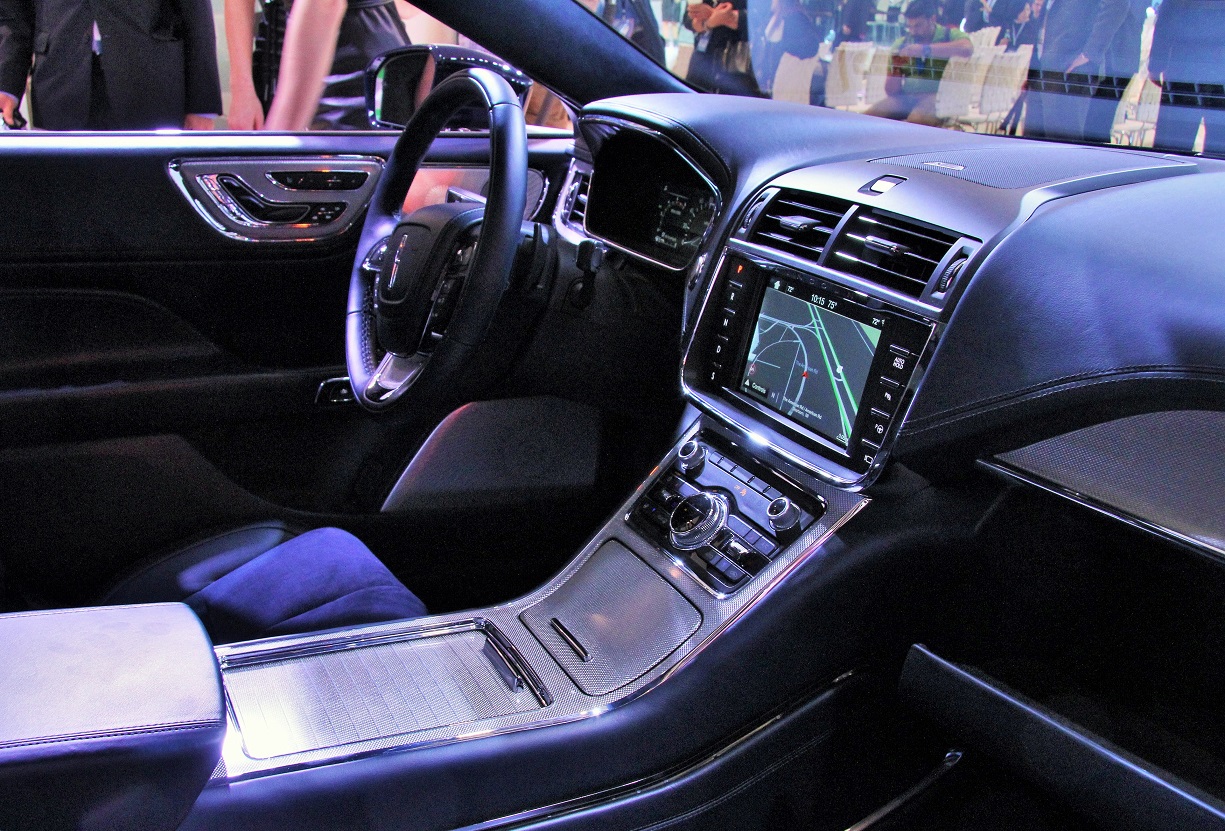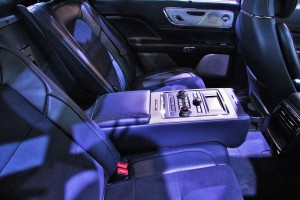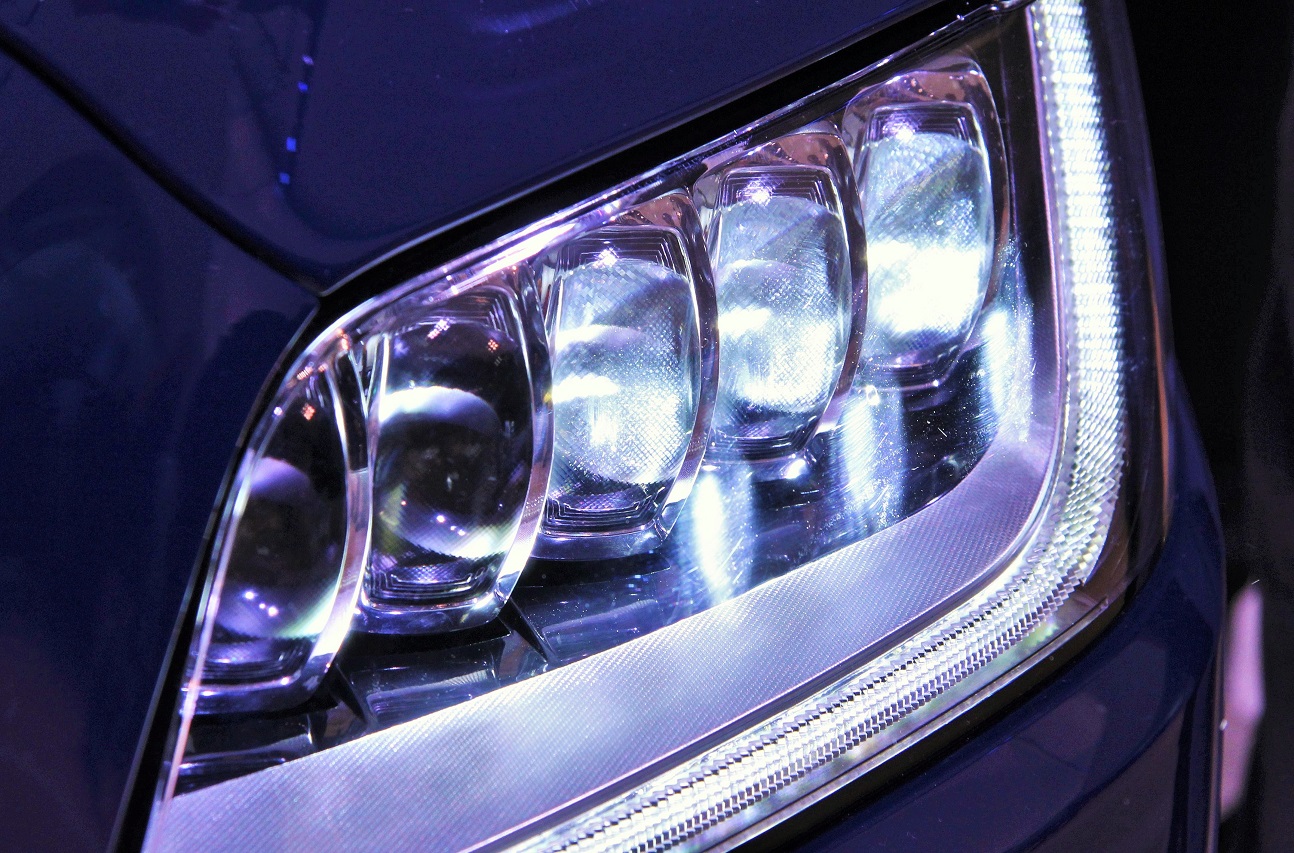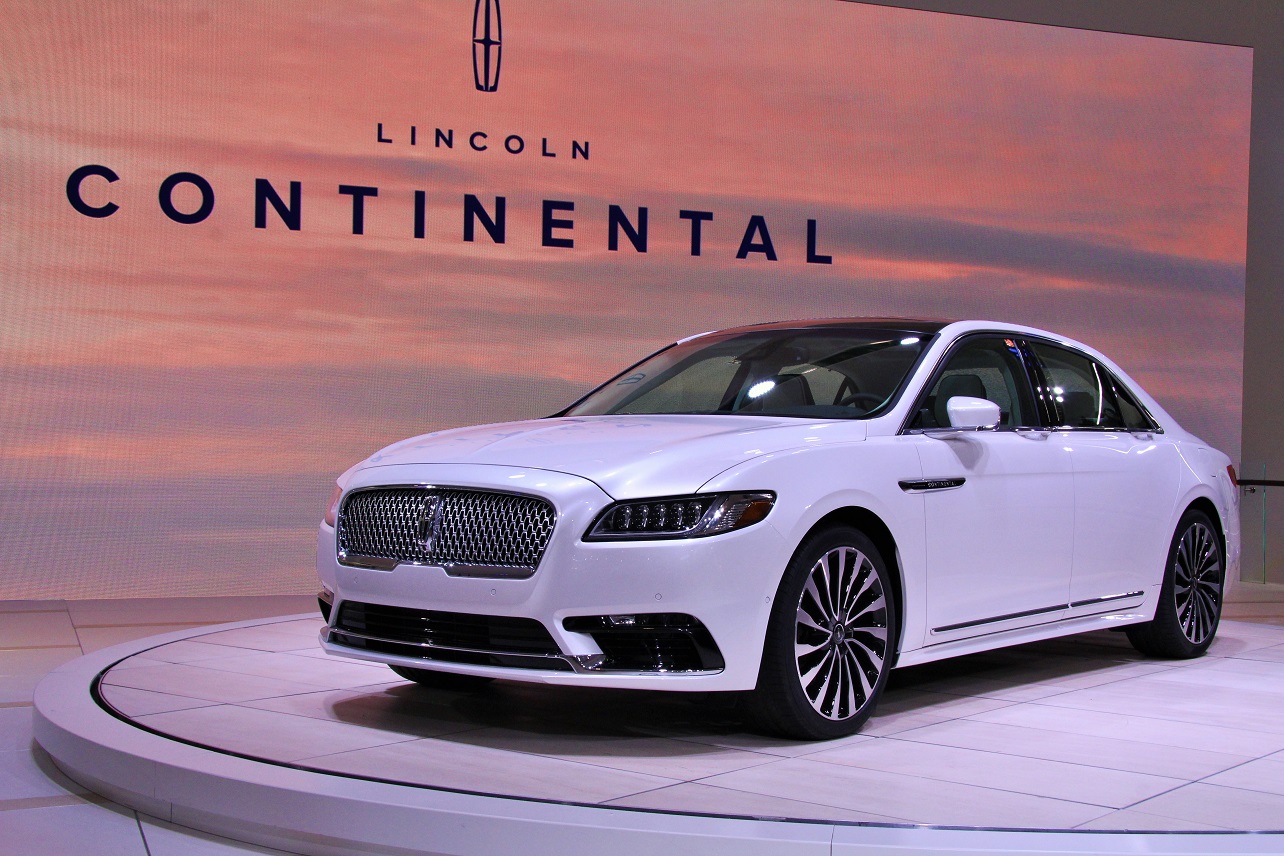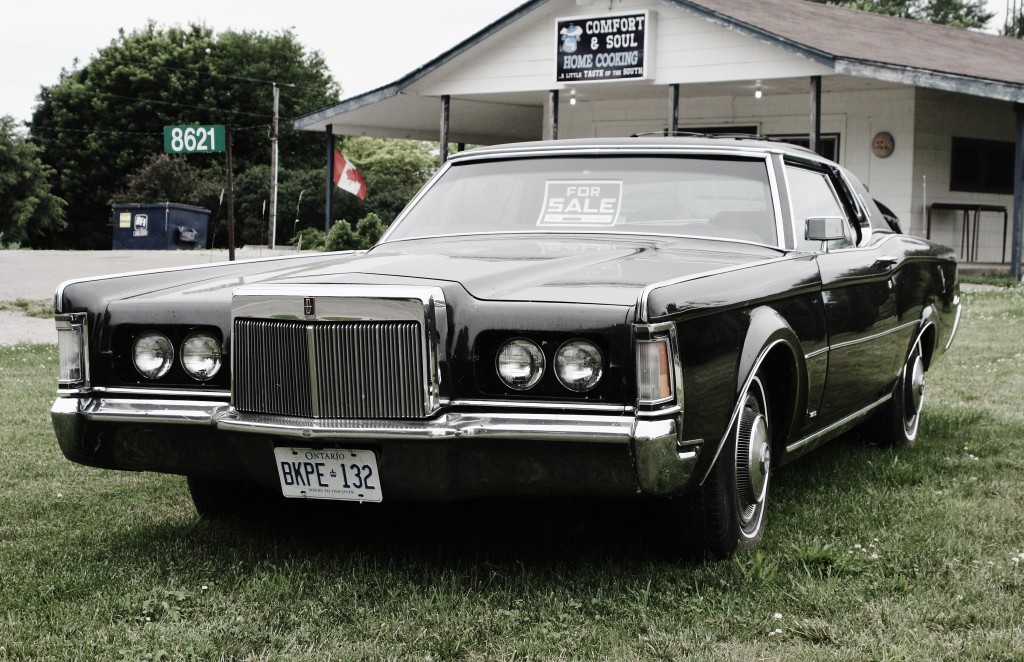With its flagship back, Lincoln gets a cherry on its sundae
It’s no secret this writer has expressed more than a passing interest in the Lincoln Continental since news broke in 2014 that the marque’s flagship was returning.
Well, as the overused phrase goes, “It’s 2016!” and the production-ready Continental is here.
Unveiled at the North American International Auto Show, the Continental is the first all-new model since the Ford Motor Company decided to resurrect the moribund Lincoln brand with a multi-billion-dollar injection of cash.
Remember that 1980s Chrysler slogan ‘The Pride is Back’? That seemed to be Lincoln’s mantra at NAIAS.
Massive lettering on a towering digital backdrop screamed announced the presence of the new range-topping sedan, which itself was parked atop a massive, gleaming white stage, flanked by two more Continentals. Incidently, they were painted red, white and blue.
Loosely translated, this means “We’re here, we’re American, and we’re heading to China!”
Yes, for some time Ford has jealously eyed GM’s success in the Chinese market – a murky opportunity factory where the nouveau riche snap up any American car with a storied (and status) nameplate. Cadillac and Buick shouldn’t have all the fun, Ford no doubt thought, and what better car to do that than a new Continental?
The soon-to-be-late Lincoln MKS – the brand’s former flagship – sold like coldcakes and was as exciting as a bowl of plain rice at an orgy. Left to wither on the vine, the model’s planned second generation was scrapped by Ford CEO Mark Fields in 2014 in favour of a model with presence and name recognition – something that would bring more distinction (and hopefully sales) to the brand.
With vehicle sales rising for the past two model years, Lincoln is slowly but surely pulling out of its lengthy sales slump. With its crossover offerings already well fleshed out (and generally well regarded) getting back into the full-size sedan market was a needed and obvious next step in the brand’s turnaround.
Outside
Last year’s Continental concept was a good indication of the shape of things to come.
Bentley-esque in profile, the concept and production model eschewed the gaudiness of the 70s and 80s, nor did it submit to a retro ‘60s design that would age quickly and make for awkward redesigns.
Many people, myself included, secretly wished for a pound-for-pound remake of the ’63 Continental, but it was not to be. Maybe Ford learned a lesson with its slow-selling retro styled Thunderbird of the previous decade.
The new Continental clearly aims to be a contemporary representative of the Lincoln brand, a rolling expression of the ‘quiet luxury’ that Lincoln literature speaks of.
The styling cues of the concept remain in a toned-down form. A high beltline with a delicate rear fender hump, wide rectangular(ish) grille gleaming with recessed chrome mesh, and chrome door handles integrated into the beltline trim stand out on the production model.
Rarely does something as pedestrian as door handles get top billing when it comes to a new model’s features, but the Continental’s ‘E-latch’ handles are something to see. Looking like they’re milled from solid chromed steel, the handles are truly unique, opening with a touch of a pad on the inside of the protruding handhold.
The doors fully latch by themselves even if only partially closed. A capacitor in each door controls the system, but as Paul Linden (Supervisor of Advanced Technologies at Ford) describes, they can be defeated manually a number of ways.
“Triple redundancies” protect an owner from being locked out, said Linden, by way of switches located on the inside of the door or via a small square panel located in the Continental badging on the door’s exterior. The system also unlocks doors automatically in the event of a serious crash.
Subtle branding exercises abound in the Continental’s front end brightwork. Surrounding the Lincoln logo in the center of the grille are hundreds of logo-shaped links, while the five projectors in each headlamp follow suit.
Out back, the branding exercise continues with truly large ‘Lincoln’ lettering stretching across the trunk lid, the width of which is enhanced by the full-width tail lamps we’ve come to expect from the company.
Filling out the fender holes are turbine-style 20-inch wheels that provide an appropriately large platform for the flagships’ rubber.
Admirers of the concept’s sleek, recessed rocker panels and metal accent trim wrapping around the lower body edge will have to live with normal rockers and far less shiny bits down low.
Looking in
The Continental’s interior reflects a mix of new and retro cues.
A healthy dose of bright aluminum mesh adorns the upper door panels, dash, steering wheel and console (both front and rear), surrounded by the leather one would expect from any luxury sedan.
Thin chrome strips ring the center infotainment screen and gauge cluster.
While there might be a little too much aluminum kicking around, the metal applied to the elegantly sparse front and rear consoles looks fantastic, and is probably the car’s biggest nod to the Kennedy era – that storybook time when the Continental was a design leader.
Good news for the finicky – the vehicle’s leather-and-fabric seats are adjustable 30 different ways. Let’s hope they have a memory function. Front and rear, the seats are heated and cooled.
While no Continental owner is safe online, at least their car’s built-in rear seat window curtains will afford their passengers some privacy while in public.
And because every day is sunny when you’re in a Lincoln, a full-length sunroof is there for access to the sun, the moon and the stars.
A 19-speaker Revel audio system, complete with rear-seat controls, rounds out the list of the biggest creature comforts.
Motivation
A new, brand-exclusive 3.0-litre twin-turbo V6 will power the top-of-the-line Continental, with the existing 3.7-litre and 2.7-litre Ecoboost engines serving as lower-rung fare. The 3.0-litre will make 400 horsepower and 400 foot-pounds of torque.
Front-wheel-drive is nothing new for the Continental nameplate, and those wheels will once again be putting the power down. Torque-vectoring all-wheel-drive will be an option.
Ford’s trusty 6-speed automatic is the only transmission offering.
The verdict
Clearly the result of a careful design process, the Continental nonetheless runs the risk of being seen as bland, or worse, a badge engineering job.
Purists have taken exception to the car’s front-wheel-drive architecture, especially given that it’s a modified version of the platform that underpins the very ordinary Ford Fusion. While its Cadillac competitor, the CT6, is rear-drive, remember that previous Caddies like the DTS and STS were front-drive.
A conversation with a friend turned up the criticism that the new Continental is “okay, but weak,” and is likely the result of the people at Lincoln “playing it safe.” The grille, he added, was underwhelming.
Fair enough – I worry the headlamps and lower fascia stray close to Ford territory, but overall I say it’s a good styling effort. Maybe a little restrained, but isn’t that what Lincoln is going for?
I’d also add that the new Continental’s subtle lines are somewhat dependent on lighting. Well-lit white Continentals seem to become nearly shapeless, while the dark blue models show off their curves much better.
Overall, Lincoln deserves kudos for its bold return to the ultra-lux sedan market and for returning a storied nameplate to dealerships. The automotive landscape is richer for it.
